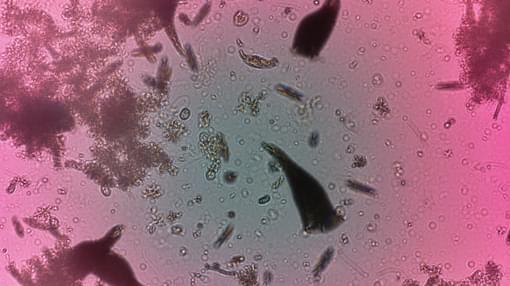Cleaning our oceans with AI-powered robot microscopes
Categories: Energy and sustainability Technology
Plankton under IBM 3D microscope

Our oceans are dirty. AI-powered robot microscopes may save them.
In five years, small autonomous AI microscopes, networked in the cloud and deployed around the world, will continually monitor the condition of the natural resource most critical to our survival: water.
The near future
By 2025, more than half of the world’s population will be living in water-stressed areas. But scientists struggle to collect and analyze even the most fundamental data about the real-time conditions of our oceans, lakes and rivers. There are specialized sensors that can be deployed to detect specific chemicals and conditions in water, but they miss unanticipated ones, like invasive species or the introduction of new chemicals from runoff.
Plankton, however, are natural, biological sensors of aquatic health. Even slight changes in water quality affect their behavior. They also form the foundation of the oceanic food chain, which serves as the primary source of protein for more than a billion people. Yet very little is known about how plankton behave in their natural habitat, because studying them typically requires collecting samples and shipping them to a laboratory.
One potential solution: a real-time network of 3D microscopes
IBM researchers are building small, autonomous microscopes that can be placed in bodies of water to monitor plankton in situ, identifying different species and tracking their movement in three dimensions. The findings can be used to better understand their behavior, such as how they respond to changes to their environment caused by everything from temperature to oil spills to run off. They could even be used to predict threats to our water supply, like red tides. In the future, the microscope could be outfitted with high performance, low power AI technology to analyze and interpret the data locally, reporting any abnormalities in real-time so they can be acted upon immediately.
How it works
The microscope has no lens and relies on an imager chip, like the one in any cell phone, to capture the shadow of the plankton as it swims over the chip, generating a digital sample of its health, without the need for focusing. To learn more, watch the video below as IBM researcher Tom Zimmerman discusses his work on building small, autonomous 3D microscopes that can be placed in bodies of water to use plankton as an environmental sensor network.
Published with permission of IBM Research: Click here for the original





